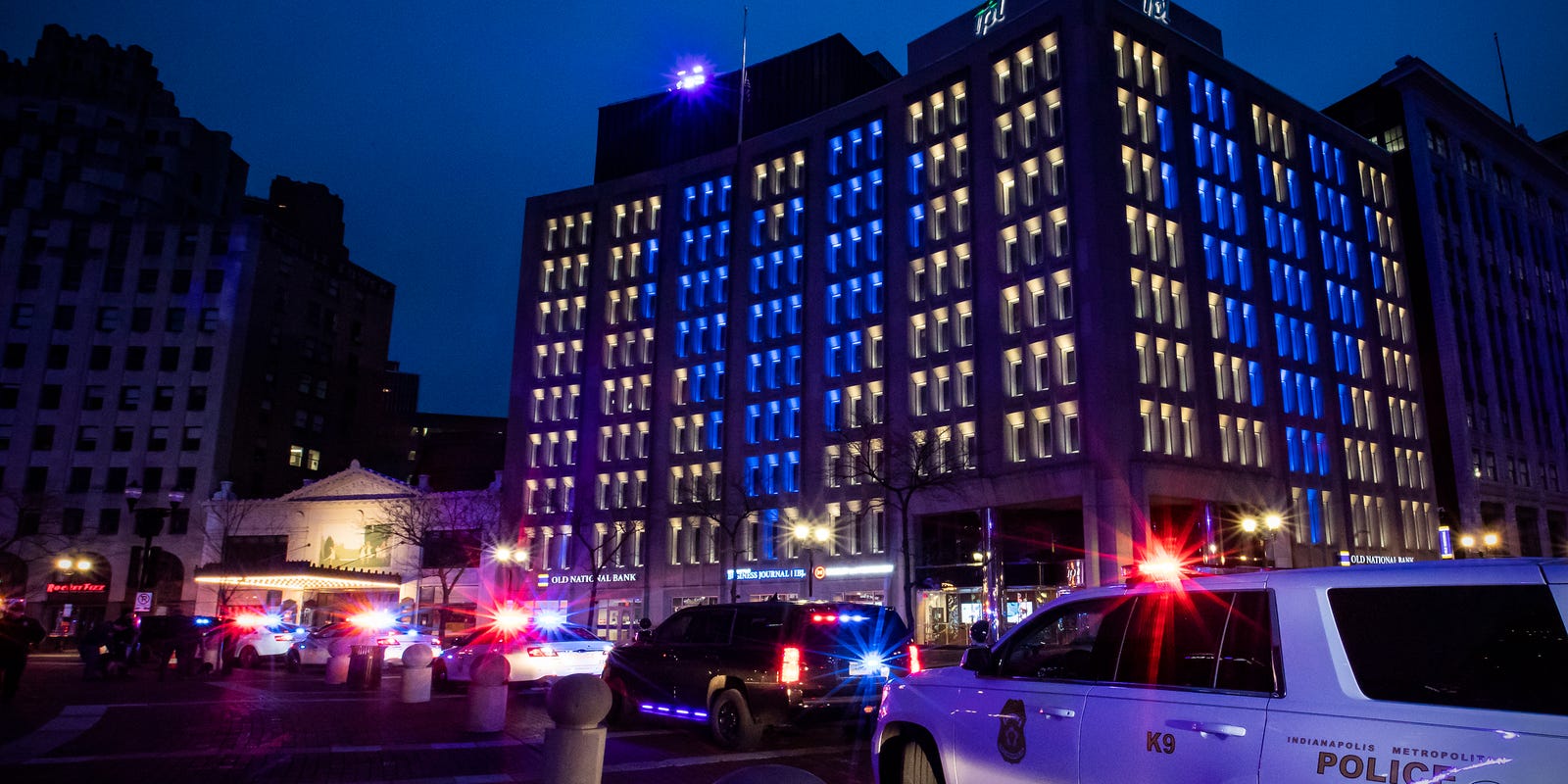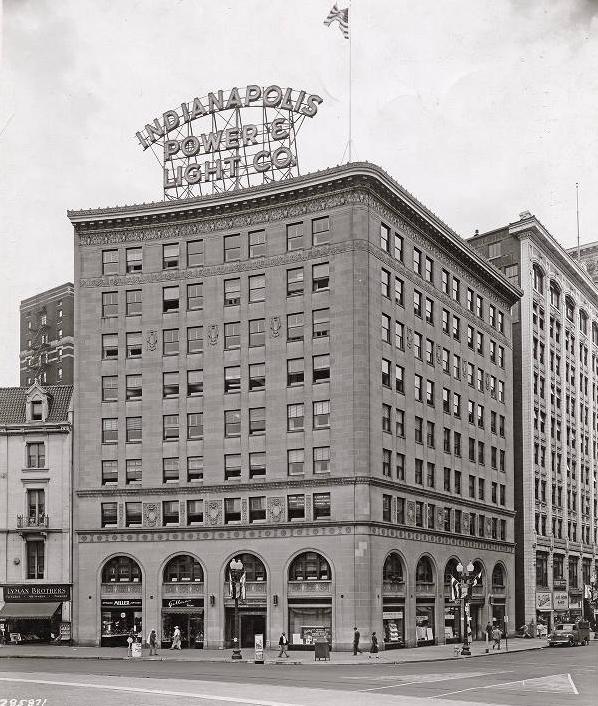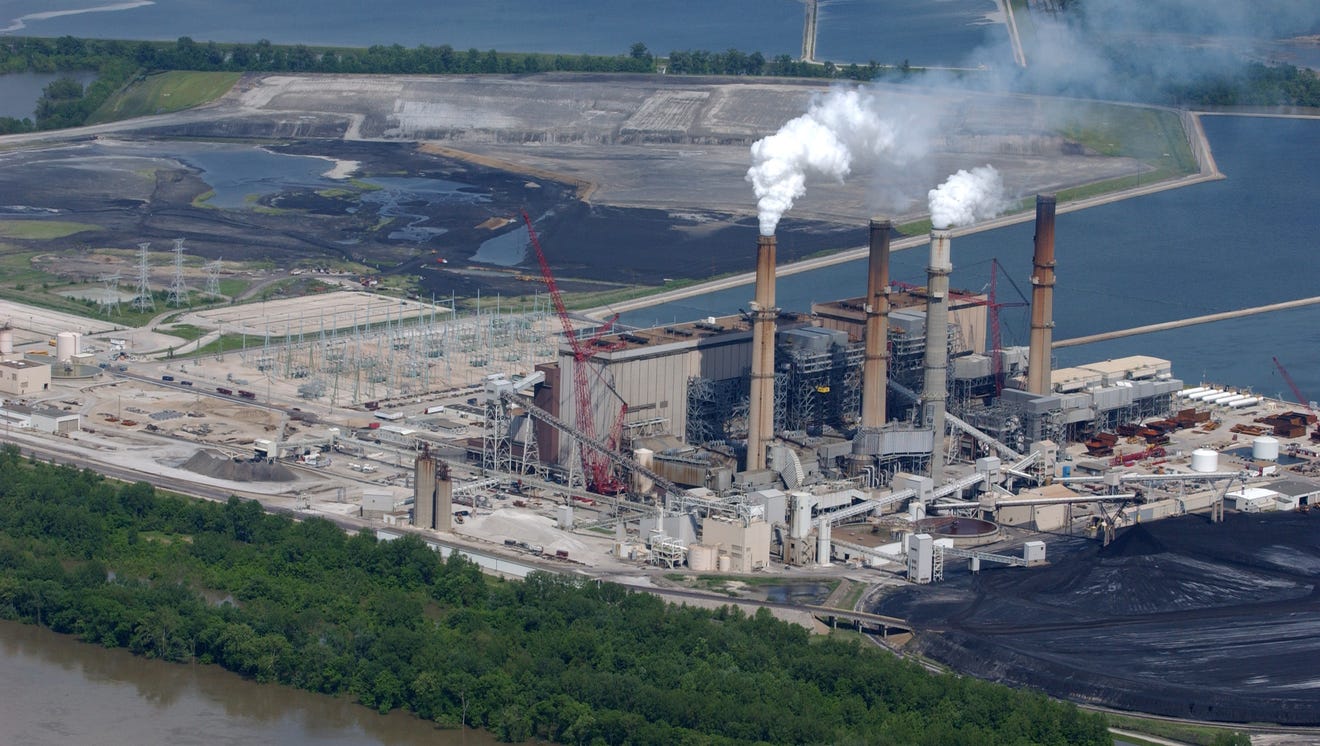Applied Energy Service Corporation (AES) is the successor to Indianapolis Power and Light Company.

Indianapolis Power and Light Predecessors, 1881-1891
The first company to introduce electric service to the city was the Indianapolis Brush Electric Light and Power Company incorporated on June 17, 1881, with ex-mayor , George W. Stokely, and Horace P. Clough as directors. A subsidiary of the Brush Company of Cleveland, Ohio, the Brush Electric Company proposed erecting electric arc lamps on high towers to light city streets but lost the contract to the gas company. After establishing the first generating station at 224 South Pennsylvania Street, the company used the old for the first display of arc lighting on January 11, 1882, and later provided service to the new State House.
While Brush Electric developed the downtown market, Jenney Electric Company, affiliated with , Inc., erected light towers in . Later known as the Marmon-Perry Light Company, directed by Daniel W. Marmon and , it was the first utility to bring Thomas Edison’s incandescent lighting to Indianapolis. Thanksgiving Day 1888, saw the lighting of the Park Theatre with 741 16-candlepower lights. Marmon-Perry also provided the first incandescent lighting of a private residence in 1889.
Indianapolis Power and Light, 1892-1982

The Indianapolis Light and Power Company (organized May 20, 1892) acquired control of Brush Electric Company, consolidated with the Marmon-Perry Company, and constructed a 1,120-kilowatt capacity generating plant at Kentucky Avenue and West Street in 1892-1893. By 1902, other electric utility companies entered the field: Merchants Heat and Light Company, founded by William C. Bobbs, Hiram P. Wasson, , Frederic M. Ayres, and Henry Kahn; and Home Heating and Lighting Company, reorganized as People’s Light and Heat Company in 1905. Fierce competition among the utilities produced wildly fluctuating rates and extensive advertising campaigns. In 1912, Merchants and People’s merged, retaining the Merchants Heat and Light name until 1926.
Indianapolis Power and Light Company (IPL) was incorporated on October 27, 1926, by Utilities Power and Light Corporation, an out-of-state holding company that owned utilities in 12 states. Under the leadership of chairman Walter C. Marmon and president Norman A. Perry, the company acquired Indianapolis Light and Heat Company (a consolidation of Indianapolis Light and Power Company and the Marion County Hot Water Heating Company) and Merchants Heat and Light. The merger, which raised concern among citizens about non-local ownership, streamlined operations into one efficient and cost-effective electric delivery service. In 1927, the company eliminated 125 miles of duplicate lines and revamped the meter system.
During the 1930s, the federal government dissolved interstate utilities to decrease costs to consumers and increase efficiency. Utilities Power and light Corporation formed a separate organization in 1939 to acquire common stock and transfer ownership to the public. On April 3, 1940, over 8,000 new shareholders made Indianapolis Power and Light Company one of the nation’s first large electric utilities to have its ownership transferred from a holding company to individual investors. The new regulated, investor-held public utility was limited to providing service to the Indianapolis-Marion County area.
IPALCO, Inc., 1983-2000
On August 30, 1983, the utility formed IPALCO, Inc., with Indianapolis Power and Light Company as its principal subsidiary, to provide diversified revenues. Mid-America Capital Resources, Inc., was formed July 31, 1984, as a subsidiary of IPALCO Enterprises to create a holding company for all non-utility subsidiaries.
Electricity production increased significantly since the beginning of the 20th century as the city and its need for power grew. Beginning in the 1890s with a capacity of 1,120 kilowatts, the company had a daily generating capacity of 160,000 kilowatts by 1940, 2.5 million kilowatts by 1977, and 2,900 megawatts in 1992. IPL served 400,000 customers and reported $633.2 million in operating revenue for 1992.
On March 15, 1993, IPALCO made an unsolicited offer to purchase PSI Resources, Inc., of Plainfield, Indiana, for $1.52 billion. Seeking to prevent the planned merger of PSI, which served 69 counties in central and southern Indiana, with Cincinnati Gas & Electric Company of Ohio, IPALCO argued that the merger would save customers $1.6 billion over 10 years and maintain Hoosier ownership of the utility. IPALCO’s takeover of PSI was not successful.
Applied Energy Service Corporation (AES) Acquisition, 2001-
By 2001, IPALCO was acquired by AES, a global power company, for around $3 billion in stock. This acquisition quickly generated lawsuits against IPALCO Enterprises due to the volatility of AES stock, which dropped substantially a year later, leaving workers with shortened retirement savings and investors with major financial loss.
IPL responded to environmental concerns throughout the 2000s, beginning with efforts to reducing dangerous emissions in its Harding Street Station and Petersburg Generating Station in 2004 and 2005. Scrubbers were installed at both plants by 2006 and 2007 to further reduce emissions. In 2009, IPL began purchasing energy from Indiana wind farms. Solar power usage came in 2013. The Advancion Energy Storage Array, a battery-based energy storage system, was built in 2016 to provide grid operators the ability to store excess electricity and use it when most needed.

The utility decreased the use of coal for power generation during the 2010s. It ceased coal use in both the Harding Street Station and Eagle Valley Station, switching to natural gas through a Combined-Cycle Gas Turbine (CCGT) in 2015 and 2018 respectively. In 2019, plans were laid to retire two of the four coal-fired units at the Petersburg Generating Station by 2023, a particularly important move as this plant has long been considered a “super polluter” with dozens of environmental violations (see ).
In 2020, IPL began a $1.2 billion upgrade to its energy grid, a needed project due to aging infrastructure causing unreliable service and incidents such as the series of exploding manhole covers on downtown streets. To achieve this financially, the utility provider planned several years of rate increases for Indianapolis residents. This was not the first time IPL raised utility rates, actions that came under scrutiny from watch groups like Citizens Action Coalition of Indiana for excessively raising rates by 57 percent from 2008 to 2018.
In February 2021 IPL announced its name change to Applied Energy Service Corporation, AES Indiana. The name change identifies the connection to the parent company and reflects the global access to technology and innovation. AES Indiana generates more than 3,000 megawatts of power covering 528 square miles of service territory for more than 500,000 residential, commercial, and industrial customers.
FURTHER READING
- Todd, Zane G. 1977. Electrifying Indianapolis : The Story of Indianapolis Power & Light Company. New York: Newcomen Society in North America. https://search.worldcat.org/en/title/3892660.
CITE THIS ENTRY
APA:
Woods, M. E. & Fischer, J. E. (2021). Applied Energy Service Corporation. Encyclopedia of Indianapolis. Retrieved Dec 13, 2025, from https://indyencyclopedia.org/applied-energy-service-corporation-aes/.
MLA:
Woods, Marcus Eugene, II and Jessica Erin Fischer. “Applied Energy Service Corporation.” Encyclopedia of Indianapolis, 2021, https://indyencyclopedia.org/applied-energy-service-corporation-aes/. Accessed 13 Dec 2025.
Chicago:
Woods, Marcus Eugene, II and Jessica Erin Fischer. “Applied Energy Service Corporation.” Encyclopedia of Indianapolis, 2021. Accessed Dec 13, 2025. https://indyencyclopedia.org/applied-energy-service-corporation-aes/.

Help improve this entry
Contribute information, offer corrections, suggest images.
You can also recommend new entries related to this topic.